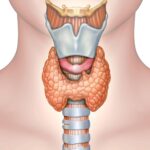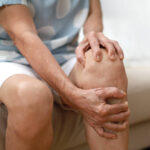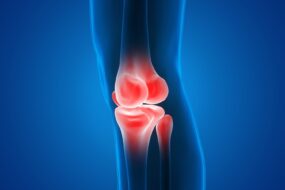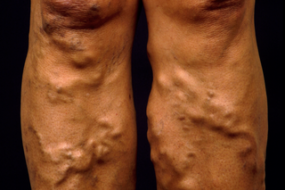
Acute pancreatitis is an acute inflammatory condition of the pancreas characterized by the activation of pancreatic enzymes, leading to local tissue damage and systemic inflammatory response. The severity of the disease can range from mild to severe, with potential for multi-organ failure.
Epidemiology
- Incidence: Varies globally, approximately 13–45 cases per 100,000 people annually.
- Etiology:
- Gallstones (40-70% of cases)
- Alcohol consumption (30-50%)
- Medications: such as azathioprine, corticosteroids, and certain diuretics (e.g., thiazides)
- Metabolic: Hyperlipidemia (triglycerides > 1000 mg/dL), hypercalcemia, and diabetes mellitus
- Infections: Viral infections (e.g., mumps, coxsackievirus)
- Genetic factors: Mutations in PRSS1, SPINK1
Pathophysiology
The pathophysiological mechanisms underlying acute pancreatitis include:
- Premature Activation of Enzymes: Activation of trypsinogen to trypsin leads to the activation of other proenzymes, resulting in autodigestion of pancreatic tissue.
- Inflammatory Cascade: Release of pro-inflammatory cytokines (e.g., TNF-α, IL-6) results in a systemic inflammatory response.
- Local Complications: Edema, hemorrhage, necrosis, and potential development of pseudocysts or abscesses.
Classification
- Mild Acute Pancreatitis: No organ failure or local/systemic complications.
- Moderately Severe Acute Pancreatitis: Transient organ failure (<48 hours) or local/systemic complications.
- Severe Acute Pancreatitis: Persistent organ failure (>48 hours).
Clinical Presentation
- Symptoms:
- Severe epigastric pain that may radiate to the back
- Nausea and vomiting
- Abdominal distension
- Fever and malaise
- Signs:
- Tachycardia, hypotension
- Abdominal tenderness and guarding
- Possible jaundice
Diagnosis
- History and Physical Examination: Identify risk factors and evaluate clinical signs.
- Laboratory Tests:
- Serum Amylase: Typically elevated (>3 times upper limit of normal).
- Serum Lipase: More specific than amylase; elevated (>3 times upper limit of normal).
- Complete Blood Count (CBC): Check for leukocytosis, anemia.
- Liver Function Tests: Assess for biliary obstruction.
- Electrolytes and Renal Function Tests: Monitor for complications and dehydration.
- Imaging Studies:
- Ultrasound: First-line for detecting gallstones and biliary obstruction.
- CT Scan: Contrast-enhanced CT is the gold standard for assessing severity, complications (e.g., necrosis, pseudocysts), and pancreatic duct status.
Management
- Initial Resuscitation:
- Fluid Replacement: Start with crystalloids (e.g., normal saline or lactated Ringer’s) at 5–10 mL/kg/hr for the first 24 hours. Adjust based on hemodynamic status and urine output.
- Monitoring: Closely monitor vital signs, urine output, and laboratory values.
- Nutritional Support:
- Mild Acute Pancreatitis: Initiate oral intake as tolerated, starting with a low-fat diet within 24–48 hours of onset.
- Severe Acute Pancreatitis: If oral intake is not possible, consider enteral nutrition via a nasojejunal tube. Initiate enteral feeding at 20-30 mL/hr and advance by 10-20 mL/hr every 8-12 hours based on tolerance.
- Pain Management:
- Opioids (e.g., morphine or hydromorphone) for severe pain. Start with a low dose (e.g., morphine 1-2 mg IV every 2-4 hours as needed) and titrate based on pain control.
- Specific Medical Therapy:
- Antibiotics: Reserved for infected necrosis; commonly used options include:
- Piperacillin-tazobactam: 3.375 g IV every 6 hours.
- Meropenem: 1 g IV every 8 hours (if multi-drug resistant organisms suspected).
- Pancreatic Enzyme Replacement Therapy: For patients with subsequent exocrine insufficiency, consider enzyme supplementation with pancrelipase (e.g., Creon) at the start of meals, typically 30,000-40,000 units of lipase per meal.
- Antibiotics: Reserved for infected necrosis; commonly used options include:
- Intervention for Complications:
- Endoscopic Retrograde Cholangiopancreatography (ERCP): Indicated for obstructive jaundice due to choledocholithiasis.
- Surgical Intervention: Indicated for:
- Infected pancreatic necrosis: Consider necrosectomy.
- Pseudocysts: Drainage may be required if symptomatic.
Complications
- Local:
- Pseudocysts: Occur in 10-20% of patients; may require drainage if symptomatic.
- Pancreatic Necrosis: Can lead to infection and requires surgical intervention.
- Systemic:
- Acute Respiratory Distress Syndrome (ARDS): Early recognition and supportive care are critical.
- Multi-Organ Failure: Continuous monitoring and supportive care are necessary.
Prognosis
- Mortality Rates:
- Mild acute pancreatitis: <5%
- Moderately severe acute pancreatitis: 10-20%
- Severe acute pancreatitis with persistent organ failure: 30-50%
- Long-term Outcomes: Patients may develop chronic pancreatitis, diabetes mellitus, or pancreatic insufficiency requiring lifelong management.
Follow-Up Care
- Regular follow-up to monitor for complications and manage any long-term sequelae.
- Education on lifestyle modifications (dietary changes, alcohol abstinence) to prevent recurrences.












